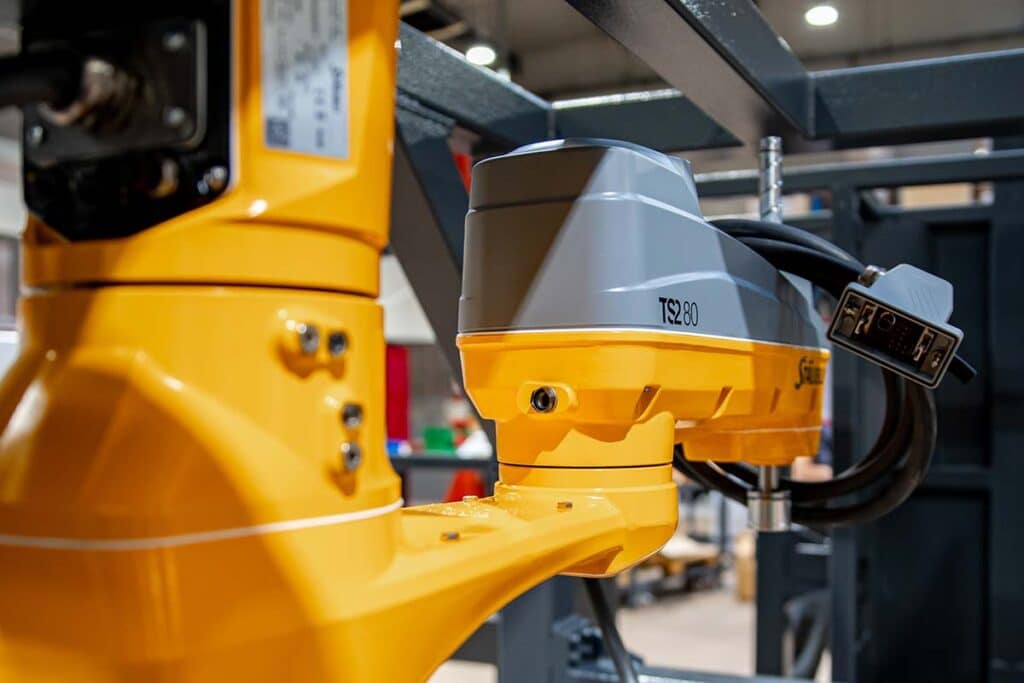SCARA robots are an example of intelligent industrial solution developed for complex manufacturing processes. At the time when modern systems require an increasing relationship between production rate, quality and seamless integration, this series of robots is particularly relevant.
In the world of automation, SCARA robots are hardly anything new. The SCARA, which stands for Selective Compliance Assembly Robot Arm, was first developed in 1979 in Japan. Nevertheless, it is difficult to compare the initial prototypes and testers of the new technology with modern devices, which offer a growing range of advanced features. Nowadays, SCARA robots are used in all fields where absolute precision is crucial. Thus, their inherent application areas, among others, include:
- palletizing systems
- sorting machines
- assembly technologies.
This is, however, only a part of their potential applications. Given the unique characteristics of each model, it is a technology that attracts attention with its exceptional versatility. Innovative arm solutions, expanding control technology options and growing modularity make SCARA a field where industry automation can continuously innovate and change.
How do SCARA robots work?
Machines operating on the XYZ Cartesian system function based on axes moving at right angles. The main feature of SCARAs is, to a certain extent, their natural limitation. Nevertheless, SCARA robots remain the fastest devices in the field of pick & place operations.
They are therefore suitable for assembly, handling and inspection processes, as well as for the packaging operations. This is facilitated by the load-capacity variation. Since they can be adjusted to both relatively small weights and decidedly large dimensions, these devices are easily adapted to most industrial and manufacturing tasks. As a result, they are a particularly popular solution for small but robot-based assembly applications. SCARAs are built with two arms joined at the base and a link. According to the principles of kinematics, the robots have a defined range of motion. In this way, they enable picking and packing as well as, for instance, assembling small components. SCARAs can move from point A to point B due to the previously mentioned characteristics- movement in the XYZ plane with rotation in the Z axis. It is worth noting, in this regard, that SCARA robots utilize both modularity and new software formats. As a result, they are used not only for simple pick-and-place tasks, but also for e.g. dispensing, gripping or advanced assembly.
SCARAs’ work area and load capacity
A key aspect for the effectiveness of SCARA robots is the possible working range. It is influenced by two factors:
- the length of the robot’s arms
- limited range of motion of its joints.
The most common model involves a cylindrical working area. Consequently, the machine has the capability to operate in a circle of different diameters. However, manufacturers of such devices consistently seek to both expand the scope and develop new formats of the SCARA operations. Manufacturers’ activities also include attempts to expand load functionality. The key issue is finding a balance between the need for increasing load capacity while keeping the dimensions of the device small. There is an apparent trend towards expanding hardware capabilities or adapting them to the current project – for example, through the multi-variant nature of SCARA robots.
Speed, repeatability and accuracy of movement
Nowadays, SCARAs are commonly used industrial robots that provide three key elements:
- operating speed
- manufacturing repeatability
- accuracy of movement in the horizontal plane.
Through varying the length of robotic arms, as well as extending their reach, the SCARA enables more complex processes. Given its small field of operation, the technology is particularly efficient in manufacturing.
The popularity of SCARAs is also influenced by their versatility. As you can attach tools- such as specialized grippers – to the base according to your specific needs, the versatility allows a unique range of capabilities. Moreover, it is broadened by the frequent use of additional adapters.
The modularity of the devices is also important, as is the possibility of their extension, adaptation or modernization – e.g. in the context of machine vision. The role of modern technologies accelerating duty cycles is also growing. Increased payload capacity for handling and assembling large components, process repeatability and material durability make SCARA robots a particularly significant element of modern production lines.


